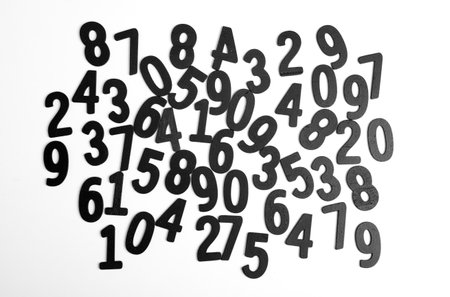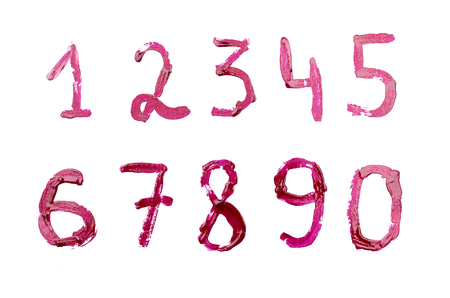Introduction to Dream Symbols in American Culture
Dreams are a fascinating part of human experience, and in the United States, people often find themselves curious about what their dreams might mean. Recurring dream symbols—those images or themes that pop up again and again—can feel mysterious or even unsettling. However, understanding these symbols can actually provide valuable insight into our thoughts, feelings, and everyday lives.
In American culture, dreams are sometimes viewed as messages from the subconscious or as reflections of daily stressors and emotions. While some folks see them as random brain activity, many Americans turn to psychology, self-help books, or even friends and family for interpretations when a particular symbol keeps showing up at night. The popularity of dream dictionaries and online forums shows just how common it is to look for meaning in recurring dreams.
Why do these symbols matter? Recurring dream images can point to unresolved issues, hidden fears, or even hopes that we carry with us. For example, dreaming about falling might suggest anxiety or a lack of control, while dreaming about being chased could relate to avoiding problems in waking life. By paying attention to these patterns, Americans hope to better understand themselves and improve their mental well-being.
How Dream Symbols Are Viewed in Everyday American Life
Dream interpretation is not just for psychologists or therapists in the U.S.—it’s something many people talk about over breakfast or coffee. Movies, TV shows, and books often reference common dream themes, making them a familiar topic in popular culture. Even school counselors and wellness coaches might ask about recurring dreams when talking about stress or emotional health.
Common Approaches to Understanding Dreams
| Approach | Description |
|---|---|
| Personal Reflection | Journaling or thinking about what the dream means personally |
| Psychological Analysis | Using ideas from Freud, Jung, or modern therapy to interpret symbols |
| Cultural References | Looking up meanings in books or websites based on cultural beliefs |
| Social Discussion | Sharing dreams with friends or family to get different perspectives |
Why Recurring Symbols Grab Our Attention
When the same symbol shows up night after night, it’s hard not to wonder why. Americans tend to see this repetition as a signal from the mind that something important is happening below the surface. Whether it’s stress from work, relationship worries, or big life changes, recurring dreams encourage people to pause and reflect on what’s really going on inside.
2. Common Dream Symbols and Their Interpretations
A Look at Frequently Recurring Dream Symbols
Many people in the United States report having similar types of dreams over and over again. These recurring dream symbols often carry specific meanings according to psychologists, reflecting our inner thoughts, stress, and even hopes for the future. Let’s break down some of the most common symbols you might see in your dreams and what they could mean.
Table: Popular Dream Symbols and Psychological Meanings
| Dream Symbol | Possible Meaning |
|---|---|
| Flying | Desire for freedom or escape; feeling in control or sometimes out of control depending on how you’re flying |
| Falling | Feeling insecure, overwhelmed, or out of control in real life; fear of failure or losing status |
| Being Chased | Avoiding a situation that you don’t want to face; anxiety or running from personal issues |
| Losing Teeth | Anxiety about appearance, communication issues, or fear of powerlessness and aging |
| Taking an Exam Unprepared | Performance anxiety, fear of being judged, or feeling unprepared for a challenge in life |
| Being Naked in Public | Feeling exposed, vulnerable, or embarrassed; fear that others will see your flaws |
| Missing a Bus or Train | Anxiety about missing out on opportunities; feeling left behind by others’ progress |
| Water (like waves or floods) | Represents emotions—calm water can mean peace, while storms suggest emotional turmoil or stress |
| Snakes | Hidden fears, transformation, or sometimes a warning about something threatening in your waking life |
| Losing Your Voice or Being Unable to Speak | Feeling powerless, ignored, or unable to express yourself in an important situation |
The American Perspective on Dream Symbols
In American culture, these dream symbols often come up during conversations with friends or even at therapy sessions. While everyone’s dreams are personal, psychologists say that these symbols have universal themes that show up due to shared human experiences—like stress from school or work, relationships, and big life changes. If you find yourself having the same type of dream over and over, it might be worth thinking about what’s happening in your daily life. Sometimes just recognizing a pattern can help you better understand yourself.

3. Cultural Influences on Dream Meanings
Dreams are not just personal experiences; they are also shaped by the culture we live in. In the United States, the way people interpret common dream symbols is often influenced by American culture, popular media, and shared social values. Let’s explore how these factors affect our understanding of recurring dream symbols.
How American Culture Shapes Dream Interpretation
The U.S. is a melting pot of different backgrounds, but there are some cultural themes that most Americans share. For example, the value placed on individual success and freedom often shows up in dream meanings. A dream about flying might symbolize independence or breaking free from limitations because of the American ideal of personal liberty.
Media Influence on Dream Symbols
Movies, TV shows, and even commercials can shape the way people think about their dreams. Horror movies may make symbols like snakes or dark rooms seem scarier in dreams than they might be in other cultures. Likewise, superhero movies have made flying dreams more likely to be seen as empowering or heroic.
Examples of Common Dream Symbols and Their American Interpretations
| Dream Symbol | Typical U.S. Interpretation | Cultural Influence |
|---|---|---|
| Teeth Falling Out | Anxiety about appearance or communication | Emphasis on physical image and social confidence in America |
| Being Chased | Feeling overwhelmed or stressed by daily responsibilities | Fast-paced lifestyle and work pressures |
| Flying | A desire for freedom or escaping limits | American ideals of independence and ambition |
| Losing Wallet or Money | Fear of losing security or identity | Material value and importance of financial stability in U.S. culture |
| Taking a Test Unprepared | Anxiety about being judged or not meeting expectations | Focus on achievement and education standards |
The Role of Social Values in Dream Themes
Social values such as competition, achievement, and community belonging also influence what kinds of dreams people have and how they interpret them. For instance, dreaming about winning a race could reflect a drive to succeed that’s encouraged from a young age in many American families.
Why Some Symbols Are More Prevalent in the U.S.
Certain dream themes tend to show up more often among Americans because they reflect common worries or hopes tied to everyday life in the U.S. Financial worries, public speaking fears, or dreams about school can be traced back to the pressures and priorities present in American society.
4. The Psychology Behind Recurring Dreams
Why Do Some Dreams Keep Coming Back?
Recurring dreams can feel mysterious or even unsettling, but psychologists have studied why certain symbols or scenarios repeat in our sleep. These dreams often reflect what’s happening beneath the surface of our minds—our thoughts, emotions, and life situations that we may not fully process when awake.
Main Psychological Theories Explaining Recurring Dreams
| Theory | Description | Common Triggers |
|---|---|---|
| Stress Response | When we’re under a lot of stress, our brains use dreams to help us process worries and fears. If the stress is ongoing, the same dream might keep returning. | Work pressure, relationship problems, financial worries |
| Unresolved Issues | If there’s a problem we haven’t dealt with in real life, it can show up in recurring dreams. The dream is like a signal from our subconscious that something needs attention. | Past conflicts, unfinished tasks, emotional wounds |
| Subconscious Thoughts | Sometimes our minds replay certain images or themes because they represent deeper feelings or beliefs about ourselves or our world. These symbols can be unique to each person. | Self-doubt, hidden desires, personal values |
Common Symbols in Recurring Dreams and Their Meanings
Certain images tend to show up again and again in people’s dreams across cultures—including the United States. Here are a few examples that might be familiar:
| Symbol | Typical Meaning | Possible Psychological Reason |
|---|---|---|
| Falling | Losing control or feeling overwhelmed | Anxiety about failure or uncertainty in life changes |
| Being Chased | Avoiding something stressful or frightening | Running from problems or unresolved fears in waking life |
| Losing Teeth | Anxiety about appearance or communication issues | Concerns about self-image or how others perceive you |
| Taking a Test (Unprepared) | Fear of being judged or evaluated negatively | Lack of confidence or fear of not measuring up at work/school/social settings |
| Missing an Important Event (like a flight) | Worry about missing opportunities or letting others down | Feeling unprepared or overwhelmed by responsibilities |
The Role of American Culture in Dream Interpretation
The meaning of these symbols can be influenced by cultural context. For example, dreaming about losing teeth might have a different significance for someone living in the U.S., where a bright smile is highly valued. Similarly, dreams about public speaking often relate to social anxiety—a common experience in American workplaces and schools.
If you notice recurring symbols in your dreams, try thinking about what’s happening in your life right now. Are you stressed? Is there an issue you’ve been avoiding? Understanding these connections can help you make sense of your recurring dreams and maybe even find ways to address what’s on your mind.
5. Tips for Understanding and Processing Recurring Dream Symbols
Keeping a Dream Journal
The first step in understanding recurring dream symbols is to keep a dream journal. Write down your dreams as soon as you wake up, even if they seem unclear or incomplete. Over time, you might notice patterns or repeated symbols. This helps make sense of what your mind is trying to tell you.
How to Start a Dream Journal
| Step | What to Do | Why It Helps |
|---|---|---|
| 1. Keep it by your bed | Place a notebook and pen within reach before going to sleep. | Makes it easy to write down details immediately after waking. |
| 2. Record quickly | Jot down any images, feelings, or people from the dream right away. | Catches the details before they fade from memory. |
| 3. Note recurring symbols | Highlight or underline any images or themes that repeat in different dreams. | Makes it easier to spot patterns over time. |
| 4. Reflect weekly | Review your journal at the end of each week. | Helps identify emotional triggers and common themes. |
Interpreting Recurring Dream Symbols
Recurring dream symbols often connect with emotions or situations in our waking life. For example, dreaming about being chased may point to stress or avoiding something important. Instead of looking for one fixed meaning, think about what these symbols mean in your own life and culture.
Common American Dream Symbols and Possible Meanings
| Symbol | Possible Meaning | Cultural Context (U.S.) |
|---|---|---|
| Losing teeth | Anxiety about appearance or communication issues | A common worry in a society focused on smiles and self-image |
| Falling | Lack of control, insecurity, or fear of failure | Relates to pressures around career or personal achievements |
| Being late | Anxiety about missing out or failing responsibilities | Ties into fast-paced, deadline-driven American lifestyle |
| Tornadoes/storms | Overwhelming emotions or chaos in life | Might reflect weather events common in certain U.S. regions, but often symbolic of emotional turmoil too |
| School exams/tests | Fear of judgment, performance anxiety, feeling unprepared | A universal experience for students and adults alike in the U.S., where testing is frequent |
Using Insights for Personal Growth and Stress Management
If you notice certain symbols showing up again and again, use them as clues to what’s bothering you or needs attention in your life. Here are some practical steps:
- Name Your Emotions: When you spot a recurring symbol, ask yourself what feelings come up when you see it in your dreams. Naming emotions can make them less overwhelming.
- Tie Symbols to Real-Life Events: Think about what was happening in your life before the dream appeared. Are you under more stress at work? Is there an unresolved issue with someone?
- Create Small Changes: If a symbol points to stress, try simple actions like talking about your worries with a friend, practicing mindfulness, or adjusting your routine.
- Seek Support if Needed: If recurring dreams are causing distress, consider talking with a mental health professional who understands dream analysis.
Your Dream Symbol Checklist
| What To Do | Description |
|---|---|
| Track Dreams | Write them down daily for at least two weeks |
| Notice Patterns | Certain people, places, or objects that show up repeatedly |
| Name Emotions | Anxiety? Excitement? Sadness? Write it down next to each dream |
| Tie Back to Life Events | Add notes about recent stresses or changes each day |
The Takeaway: Make It Work for You
No matter which symbols keep popping up in your dreams, remember that their meanings are personal. By tracking them and connecting the dots with your real-life experiences and emotions, you can turn those nightly mysteries into tools for growth and stress relief.

